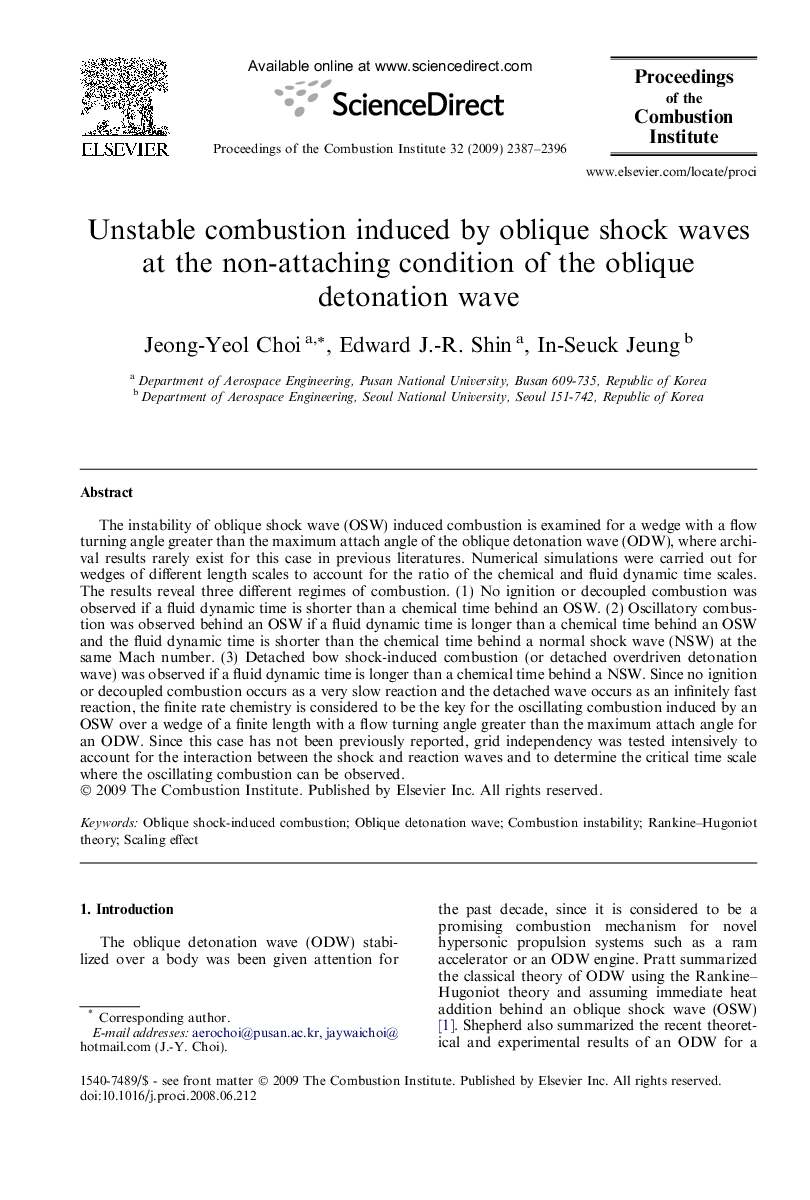| Article ID | Journal | Published Year | Pages | File Type |
|---|---|---|---|---|
| 241098 | Proceedings of the Combustion Institute | 2009 | 10 Pages |
The instability of oblique shock wave (OSW) induced combustion is examined for a wedge with a flow turning angle greater than the maximum attach angle of the oblique detonation wave (ODW), where archival results rarely exist for this case in previous literatures. Numerical simulations were carried out for wedges of different length scales to account for the ratio of the chemical and fluid dynamic time scales. The results reveal three different regimes of combustion. (1) No ignition or decoupled combustion was observed if a fluid dynamic time is shorter than a chemical time behind an OSW. (2) Oscillatory combustion was observed behind an OSW if a fluid dynamic time is longer than a chemical time behind an OSW and the fluid dynamic time is shorter than the chemical time behind a normal shock wave (NSW) at the same Mach number. (3) Detached bow shock-induced combustion (or detached overdriven detonation wave) was observed if a fluid dynamic time is longer than a chemical time behind a NSW. Since no ignition or decoupled combustion occurs as a very slow reaction and the detached wave occurs as an infinitely fast reaction, the finite rate chemistry is considered to be the key for the oscillating combustion induced by an OSW over a wedge of a finite length with a flow turning angle greater than the maximum attach angle for an ODW. Since this case has not been previously reported, grid independency was tested intensively to account for the interaction between the shock and reaction waves and to determine the critical time scale where the oscillating combustion can be observed.
